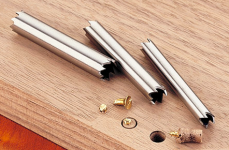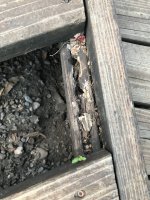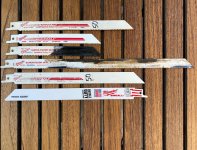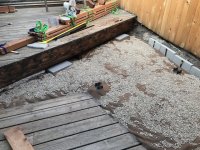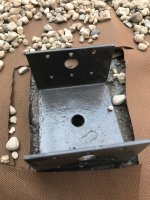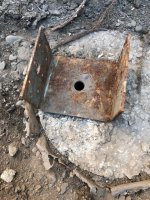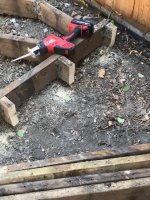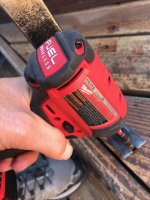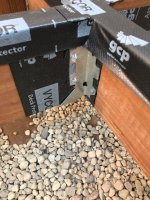The framing on my early 90's Redwood deck is rotting. It is near ground and I have no access to framing from below. The redwood itself is 2x6 old school really good stuff, almost clear, knot free and totally worth saving. One cannot easily buy this kind of Redwood today. Have been avoiding/ignoring issue for a few years, but plan to have at it late August once it cools down a bit here.
The plan is to remove decking and plane it down about 1/4", but (there's always a "but" with remodel projects) the old yellow zinc screws are toast and don't want to come out. I'm not dealing with bit spinning and stripping screw heads, but screws breaking in place.
I did a quick test on 6 screws with my impact driver:
1 screw I stripped the head.
1 screw backed out around 1.5" then snapped.
4 screws simply turn in the wood without backing out. These likely fractured and shanks are imbedded in redwood or possibly threads have no purchase in the rotting wood and can't push the shanks up. If they fractured then sound of impact masked the snap. Right now it's very hot and dry here so I will try getting the wood to higher moisture and see if screws might come out easier, but that's doubtful.
I can go at this with a sawzall and pull deck/framing sections to get access from below to remove decking from framing, but I assume I will end up with lots of busted screws imbedded in the Redwood and will need a way to get them out before planing and reinstalling the deck on new framing.
Best option I can come up is a hollow screw extractor (see photo) followed by some sort of plug repair before planing, but we're talking hundreds of holes and my experience is the hollow extractors are kind of fragile. This will be beyond tedious, but I can go there if needed.
Anybody have better ideas for getting screws out intact or a better way to extract busted remnants??
The plan is to remove decking and plane it down about 1/4", but (there's always a "but" with remodel projects) the old yellow zinc screws are toast and don't want to come out. I'm not dealing with bit spinning and stripping screw heads, but screws breaking in place.
I did a quick test on 6 screws with my impact driver:
1 screw I stripped the head.
1 screw backed out around 1.5" then snapped.
4 screws simply turn in the wood without backing out. These likely fractured and shanks are imbedded in redwood or possibly threads have no purchase in the rotting wood and can't push the shanks up. If they fractured then sound of impact masked the snap. Right now it's very hot and dry here so I will try getting the wood to higher moisture and see if screws might come out easier, but that's doubtful.
I can go at this with a sawzall and pull deck/framing sections to get access from below to remove decking from framing, but I assume I will end up with lots of busted screws imbedded in the Redwood and will need a way to get them out before planing and reinstalling the deck on new framing.
Best option I can come up is a hollow screw extractor (see photo) followed by some sort of plug repair before planing, but we're talking hundreds of holes and my experience is the hollow extractors are kind of fragile. This will be beyond tedious, but I can go there if needed.
Anybody have better ideas for getting screws out intact or a better way to extract busted remnants??

